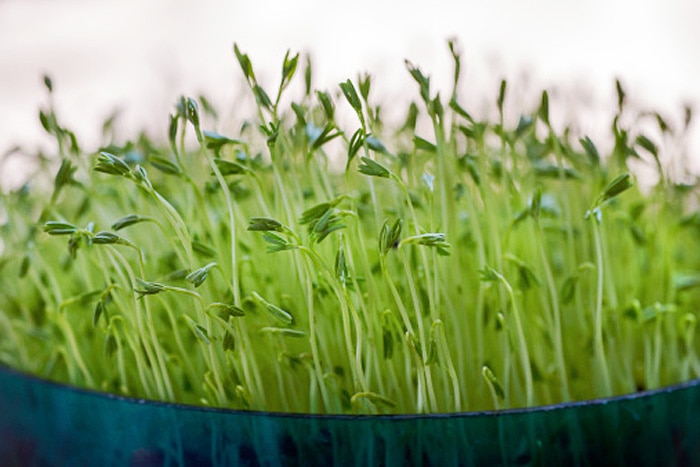
Written By: Christina Newberry
Reviewed By: Gloria Tsang, RD
Title: Registered Dietitian
Last Updated on:

In the depths of winter, fresh produce is less bountiful, and many of us eat less fresh fruit and vegetables than we do in the summertime. But did you know that if you start planting today, you could have fresh, ready-to-eat sprouts in your kitchen within three or four days? Growing your own sprouts is really easy; you don’t need a green thumb, or even have access to outdoor space. A jar is all your need. You don’t have to stick to plain old bean sprouts, either. There’s a whole world of sprouts – with different nutritional profiles – for you to discover.

Table of Contents
Sprouts pack a lot of nutrition into a tiny package. Here are five popular sprout varieties to try for yourself. The calorie counts are courtesy of Barbara Sanderson of the International Sprout Growers Association.
The first step to growing sprouts at home is to find high-quality, organic or food-grade seeds for sprouting, to avoid chemicals or manure traces that may be found on seeds meant for growing full-sized plants. You can find seeds for sprouting at many health food stores, or online. Once you have the seeds, soak them for 8 hours or overnight, then rinse. From there, you can use the jar method or the tray method to grow your sprouts.
Neither method requires direct sunlight. In fact, sprouts will grow better without direct sun. If you want your sprouts to turn green, place them in a sunny spot for the last day of their growth. Then just rinse and eat!
Growing sprouts is an easy way for anyone to grow fresh, nutritious food, and can also be a fun project for kids. Depending on the variety you choose, and how big you want your sprouts to be, you can have fresh nutritious sprouts in as little as three days, or as long as a week.
Alumni: University of Victoria – Christina Newberry is a writer and editor whose work has appeared in national and local magazines and newspapers. With a Bachelor’s degree in English and Anthropology from the University of Victoria and a Journalism Certificate from Langara College, Christina brings keen curiosity and the love of a good story to her work with HealthCastle.com.
Christina is a passionate traveler and urban gardener with an interest in vegetarian eating and making good, tasty food from scratch. Sharing lessons learned from her own experiences, Christina writes about lifestyle topics for HealthCastle, with a focus on eating well at home and on the road.